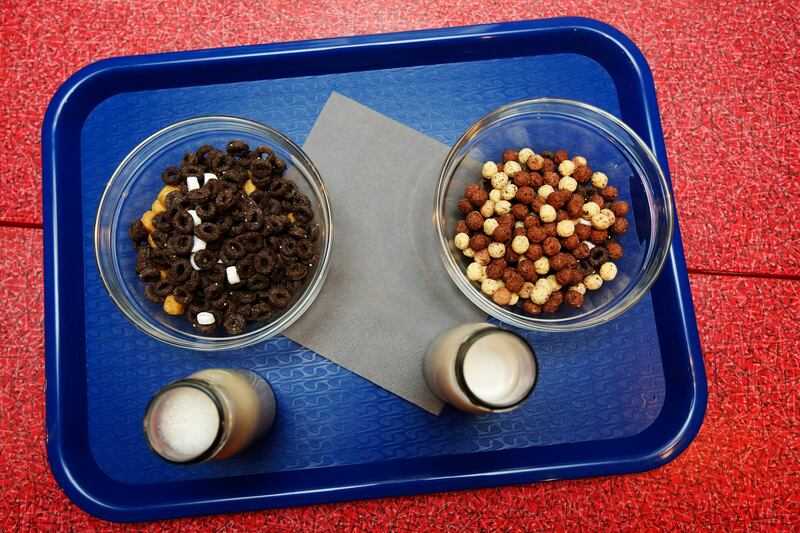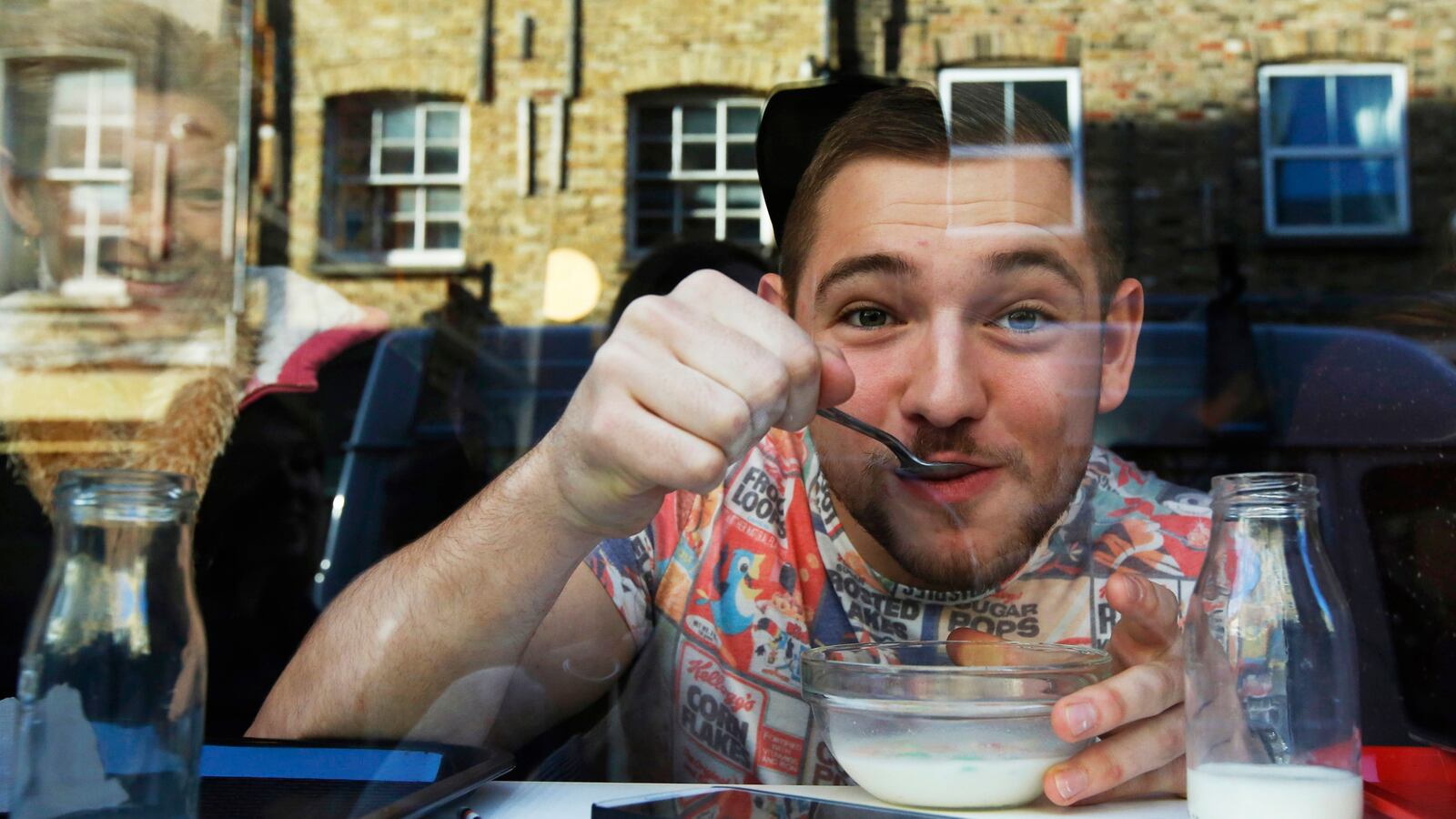Cereal Killer, London’s inaugural cereal cafe, may only be in its first week of operation, but the line was already out the door on a bitterly cold December day that left the crowds red raw. But, if anything, the endurance made the desire for comfort food even greater. I was there with three friends, all in our early 20s, to figure out what all the fuss was about and what it was that makes cereal an almost universal connector.
Along with crowds, Cereal Killer has also drawn polarizing responses from the public and the media. In addition to reviews questioning its longevity and vision (Vice called the restaurant “a Slap Bracelet to the Face”), the most recent wave of criticism has come from the UK’s Channel 4, which questioned the owners about selling relatively pricey bowls of cereal in one of the poorest areas of London. Co-owner Gary Keery responded by saying Channel 4 was “making a mockery out of me.”
Cereal Killer is just one of the latest in a growing trend of quirk-centric cafes opening across the city, like the first cat café, Lady Dinah’s Cat Emporium, which opened in Shoreditch earlier this year. This nostalgia-inducing eatery is the new venture of twin Irish brothers Alan and Gary Keery who left jobs as an e-cigarette sales manager and a Superdry senior store manager to open the cafe. After failing to reach their targeted goal on crowdfunding sites, the café became a media sensation following a piece on Buzzfeed. “It just went mad,” Gary later told Buzzfeed, “we did about five or six radio interviews in two days, it’s been all over the world. It was even in a Mexican newspaper.”

The tiny venue plays up to its name with portraits of famous fictional serial killers Hannibal and Dexter made entirely of cereal (and that are also available for purchase). A selection of campy 90s pop songs and cult TV theme tunes play in the background as patrons choose their favorite childhood cereal or decide to try something completely new. I opted for Kellogg’s Cinnabon with a carafe of strawberry milk, while my friends chose cereal cocktails of strange continental “strawberry pops” and Reeses Puffs that were sickly sweet. Other options on the vast menu include South Korean Oreos cereal that is apparently one of the biggest sellers, a Barbie cereal that promises a chance to win a real diamond, and a Y2K-themed cheerios called Millennios.
Cereal’s dominance as a breakfast food did not begin until the 19th century after industrialization moved most labor from farms to factories, culinary historian Andy Smith explained to me. But the real shift happened in the 20th century, when companies began to realize there was a market for cereal they had yet to tap: children. Radio and television marketing created exciting brands, mascots, and characters that lured children into wanting increasingly sugary cereals. Some of these cereals, Smith pointed out, were 60-percent sugar. “It’s not cereal at all,” he laughs, “it’s candy.
Everybody’s memories of cereal differ, but one constant remains: cereal is a near-universal, nostalgia-inducing childhood breakfast food. My parent’s reminisce about the toy submarines they found in their boxes of Kelloggs, while rapper Kendrick Lamar sings of his nostalgia thinking back on Saturday mornings spent watching cartoons and eating cereal. In “Cartoons and Cereal,” he sings, “Reminisce when I had the morning appetite/ Apple Jacks, had nothing that I hit the TV Guide.” Cereal has become a food that is at once evocative, comforting, and familiar, and it’s this combination of factors that makes Cereal Killer interesting.
Waiting to be served at the café, surrounded by kitsch vintage cereal boxes, was like seeing a timeline of all the things I had grown to love in the 90s. My friends and I quickly discounted any cereals on the vast menu that we could buy from a supermarket—along with the plethora of healthy granolas and spelt flakes available. Instead, we looked at the shelves of cinnamon-chocolate-peanut-butter-cookie flavored monstrosities we had never been allowed when our parents were in charge.

America already has a cereal cafe, Cereality, which has a store in Virginia and at the Dallas Fort Worth airport. In New York, famed chef Christina Tosi, founder of Momofuku Milk Bar, has become known for her creation of a “cereal milk” flavor of soft serve ice cream and milk, which the restaurant has trademarked. You can even buy containers of their Cereal Milk in select stores.
Tosi has been using cereal milk as a flavor ever since 2007, and she says it taps into a universal “memory sensor.” “Making a connection with something you eat is what I believe really resonates with people, sparks a memory and keeps us all obsessed with food,” Tosi stated in a company press release. “Eating cereal is a comforting part of everyone’s diet at one point or another, whether early in the morning or late at night. Cereal milk is so simple, a little quirky, but get-able, too!”
My friend Kate Thorogood echoed this sentiment—and Kendrick Lamar—when she said: “Whenever I have a massive bowl that will essentially fill me up for the day, it reminds me of Saturday mornings [when] you could have a billion bowls of cereal and watch cartoons. It reminds me of days when I didn’t have to do anything.”
Although Cereal Killer has its flaws—the tiny size, the long queues, the often excessively sugary flavors—it also taps into something deeper. Cereal brings back memories of lazy mornings and easy extravagance, a time when worries were few and comfort was plenty.


